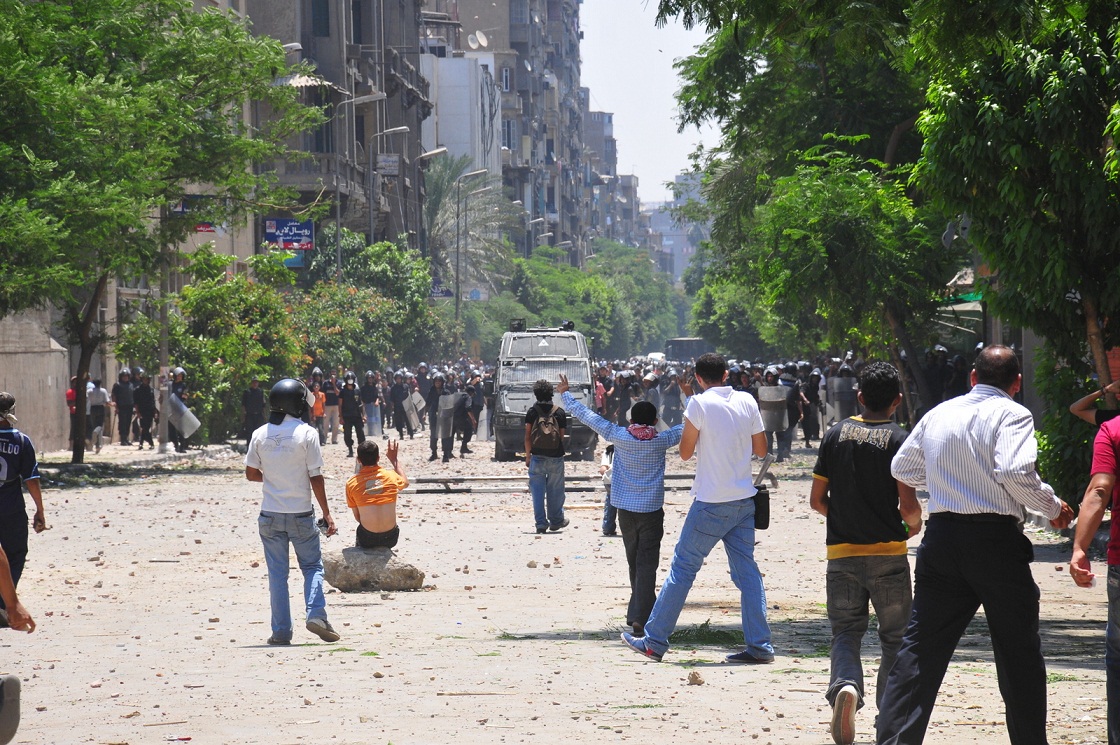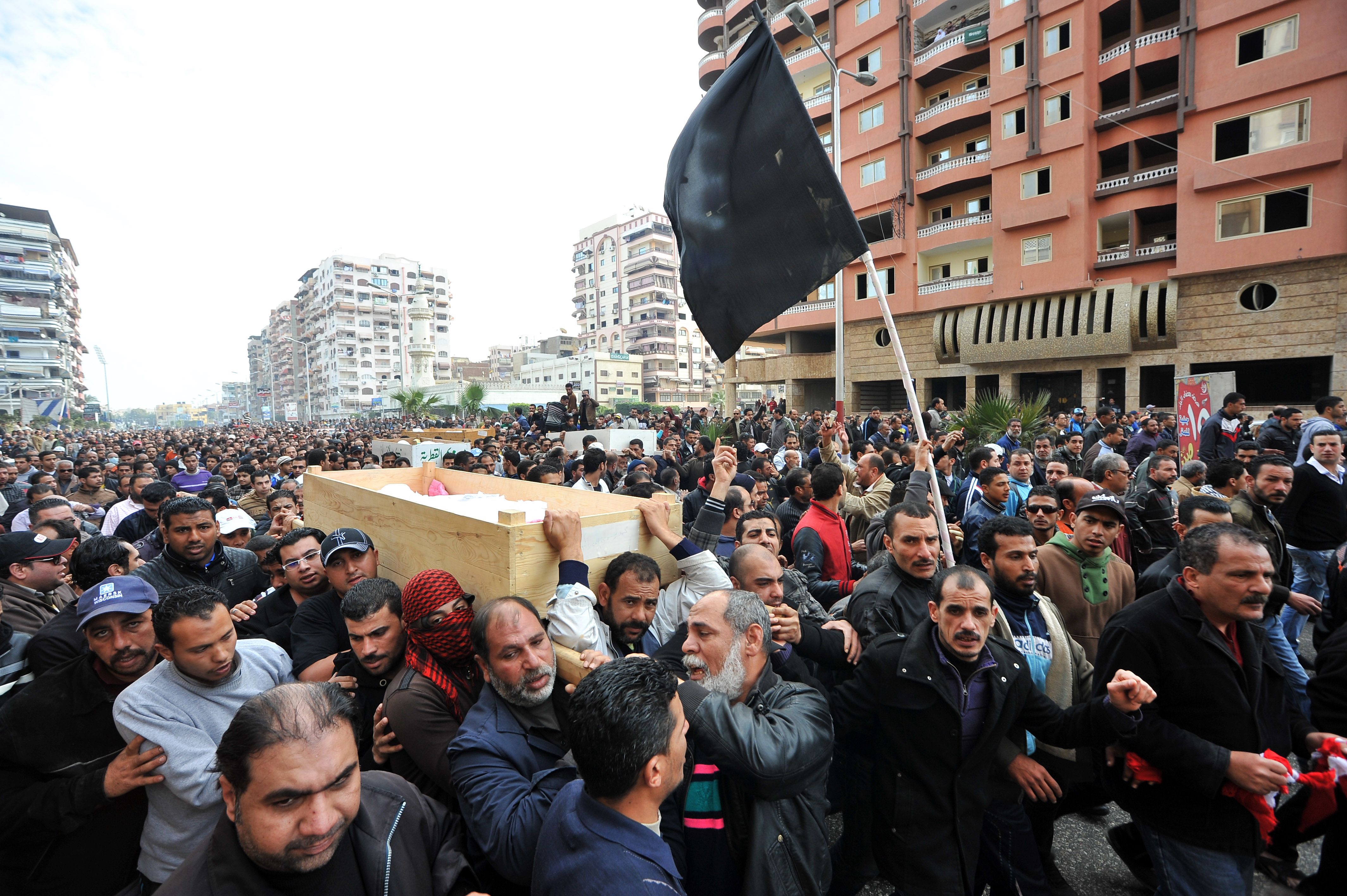
Hassan Ibrahim
By Ahmed Aboul Enein, Basil El-Dabh, Joel Gulhane and Connor Molloy
The walls of Mohamed Mahmoud are emblazoned with graffiti that tells the tale of this now iconic street. This is the tale of a murderous police force, political leadership that failed a revolution, a group that made no sacrifices but seized all the spoils, and martyrs.
For over a week in November 2011 the downtown street, home to restaurants, cafes and a university became a war zone. Conscripted riot police and their commanding officers fired a constant barrage of tear gas, rubber bullets, buckshot and live ammunition at hundreds of young men who responded with nothing but rocks and the occasional Molotov cocktail.
It began when thousands of Islamists took to the street on 18 November in one of the largest Friday “million man” protests to arrive at Tahrir.

The police force’s use of firearms broke both Egyptian and international law, according to an Amnesty International report.
The attempt to forcefully break up the peaceful protest on 19 November is in direct violation of article 21 of the International Covenant on Civil and Political Rights (which Egypt is party to) ensures the “right of peaceful assembly” with no restrictions.
There has been no feasible justification for the use of force against the peaceful protesters, as they were not posing a threat to national security, public safety or public order.
Hassan Ibrahim
The protesters, led by the Muslim Brotherhood, were demonstrating against then-Deputy Prime Minister Aly El-Salmy’s “supra constitutional principles,” which gave the ruling military council power over the constitution drafting process and over the handover to civilian rule.
A smaller contingent of revolutionary youth was also there that day. Their demands were for presidential elections to be held immediately after parliamentary ones and for a handover of power by April 2012 instead of June 2013.
By nightfall both groups mostly left the square. All that remained were less than a dozen tents where the families of the 25 January 2011 uprising’s martyrs and the injured were staying, having started an open-ended sit-in two days earlier demanding justice for their relatives and swift trials for their killers.
Although small in number, the police apparently viewed them as a threat. Central Security Forces violently broke up the sit-in, beating the protesters and tearing their tents apart. Revolutionary youth quickly arrived on the scene and police started using tear gas. The battle moved into Mohamed Mahmoud Street where it raged for eight days.
Before the battle
The Supreme Council of the Armed Forces (SCAF), which took over the country following the ouster of former President Hosni Mubarak, initially promised to rule for a transitional period of just six months.
The deadline was extended with parliamentary elections planned for September and presidential elections in December. A constitution was to be completed after presidential elections with SCAF out of the picture.
Parliamentary elections were postponed to November and scheduled so that they would be held over three months. SCAF made other modifications, claiming there could be no presidential elections before a constitution. Before the Mohamed Mahmoud clashes, presidential elections were scheduled for June 2013.
At the time, SCAF held both executive and legislative powers, exercising the former through Essam Sharaf’s cabinet, viewed as weak-willed and subservient to the military council. In short, SCAF was in control.
On the other hand, the revolutionary youth who sparked the January uprising were at their lowest point. SCAF and what remained of Mubarak’s regime, had launched a brutal and effective smear campaign against them, to the point where the average citizen blamed the revolution for all their problems.
Revolutionaries were also subjected to violence, with at least one protest per month since March being forcibly broken up by either the military or police.
This trend culminated in the Maspero massacre of October when military vehicles ran over 15 Coptic Christian protesters and the army shot dead a further eight in a throwback to the 28 January clashes all over Egypt.
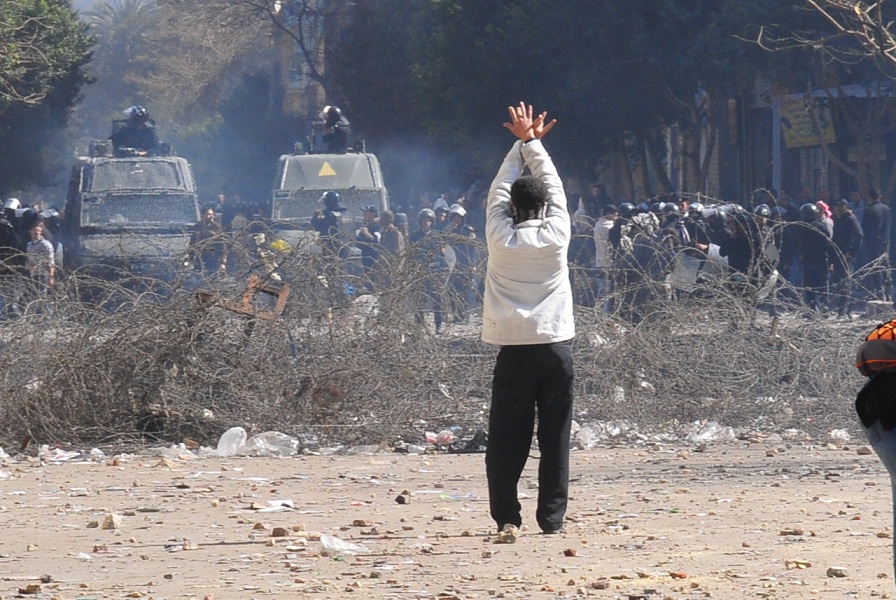
Hassan Ibrahim
At the time Egypt’s future rulers, the Muslim Brotherhood, lay in wait. The Brotherhood was initially part of the broad coalition that forced Mubarak to resign, counted among revolutionary forces.
This quickly changed during and after the March 2011 constitutional referendum. SCAF had amended the 1971 constitution and put it up for referendum. The revolutionaries, who demanded an entirely new constitution, campaigned for a “no” vote.
The Brotherhood, viewed that SCAF’s proposed roadmap of amending the constitution, holding elections, then drafting a new constitution, would lead to faster stability.
Egypt’s Islamists used religion to campaign for a “yes” vote, using mosques to campaign and claiming that Article 2 of the constitution, stipulating Islam as the state religion and the principles of Shari’a as the main source of legislation, was under threat.
The amendments were passed, the revolutionaries felt the Brotherhood had betrayed the revolution.
Right before the clashes, the Brotherhood was preparing its political arm, the Freedom and Justice Party, for the upcoming parliamentary elections.
The battle rages on
The protesters’ resolve remained unbroken, with hundreds of youth heading into Mohamed Mahmoud Street to stop the police’s advances on the square. And stop them they did, for eight straight days.
Men on motorcycles transported the injured and those who had fainted from tear gas inhalation back to the square. They also transported the occasional body every few hours. Almost 50 overall, at least 14 on one day.
Those in Tahrir set up several field hospitals to treat the injured. Other brought food, medicine and other supplies. The presence of hundreds of thousands in the square helped spur on those fighting in Mohamed Mahmoud Street.
It also ensured political and media attention.
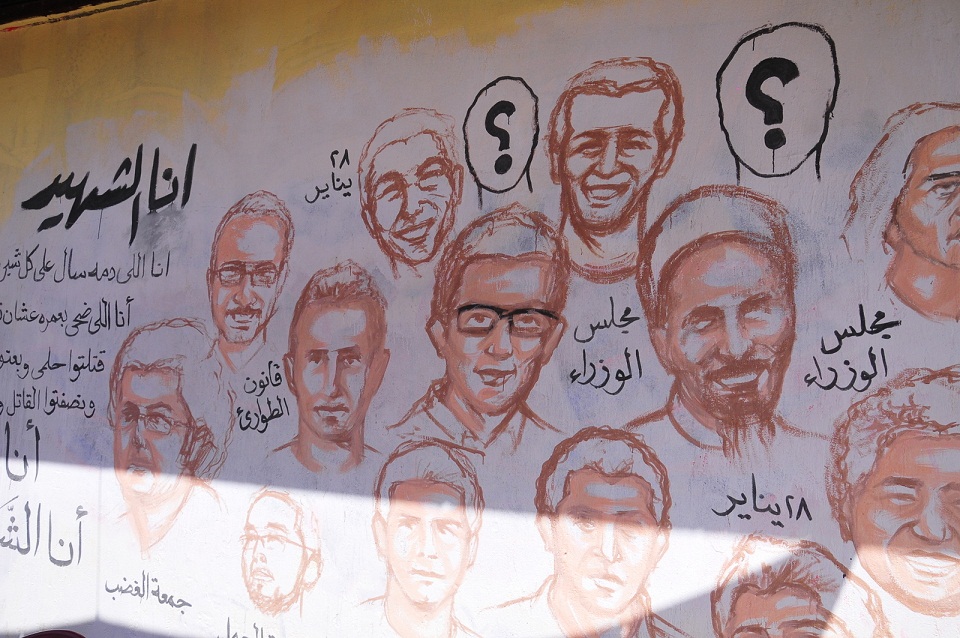
Hassan Ibrahim
Hania Mansour, a coordinating member of the 6 April Youth Movement who was in Mohamed Mahmoud throughout the clashes, spent time working at an emergency clinic on the ground.
She talked about the heavy weaponry that was used; in particular the strange gas.
“In the clinic I saw many symptoms of the gas. Some people were throwing up white stuff, others were shaking, and others couldn’t breathe,” said Mansour.
She added that some of the corpses she saw were black, as if they had been burned, and wondered if the gas caused it.
Police used tear gas, rubber bullets, buckshot and live bullets, although they did not admit to the use of live ammunition. Minister of Interior Mansour Al-Essawy, for whom protesters demanded resignation, made a number of media appearances throughout time of the clashes, claiming that police were not firing at demonstrators or any other civilians.
The Interior Ministry repeatedly denied using live ammunition or rubber bullets against protesters in a string of statements throughout the week. On 19 November it claimed police were working to control vandals who had damaged property in the area, saying dozens of policemen had been injured.
Two days later the Interior Ministry claimed demonstrators had blocked traffic from Tahrir and then provoked police into clashes.
The ministry claimed it was using tear gas to disperse “rioters” and in an effort to control the vandalism and danger to the police.
It said protesters had the right to free expression, but that police had to intervene after disruptions were caused and the security apparatus was provoked.
SCAF urged Egyptians to remain calm and to adhere to the democratic transition “roadmap” that had been put in place.
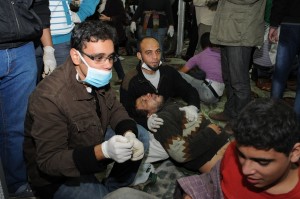
Laurence Underhill
The council’s first statement on the violence was made on the evening of 20 November, denying that it was attempting to delay handover to civilian authority. The statement contained an assertion by the armed forces that it would not obstruct the process of democratisation.SCAF expressed its “deep regrets” and called on all political forces to work with “all strength and solidarity” in an attempt to evoke the “spirit of 25 January.”Over the ensuing days as clashes continued SCAF continued to claim that violence was threatening the handover of power that it insisted it was eager to carry out.
On 22 November Field Marshall Mohamed Hussein Tantawi officially accepted the resignation of Prime Minister Essam Sharaf.
Tantawi reiterated that SCAF did not want to stay in power and was ready to hand authority over to a civilian government as soon as the country’s transitional roadmap would permit.Protesters expressed outrage over Tantawi’s speech and the statement released by SCAF the next day, which claimed, “[SCAF] confirms that there is no truth whatsoever to the resonating rumours that the armed forces are using ammunition against demonstrators in Cairo and Alexandria.”
Throughout the next two days SCAF released a series of statements urging Egyptians to refrain from spreading “rumours” of the role of the military and police in the clashes.
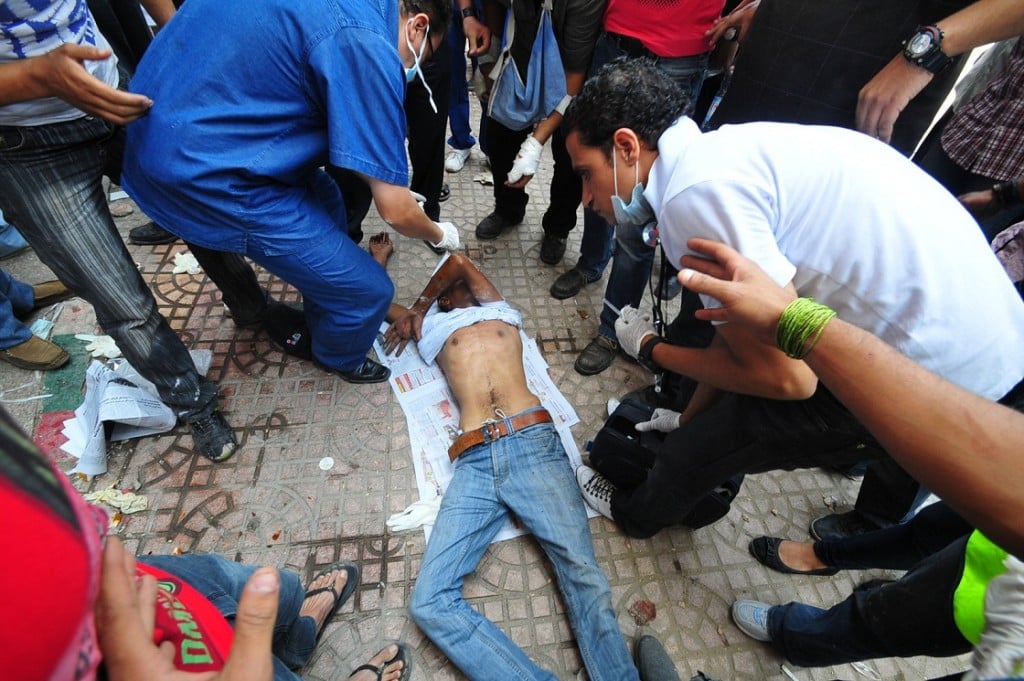
Four coffins, draped in Egyptian flags to commemorate those who were killed, led the march.
Hassan Ibrahim
Both the Interior Ministry and SCAF repeatedly urged people to refrain from provoking the security apparatus, but were not able to identify tangible culprits for the deaths and injuries.
The two repeatedly used parliamentary elections as a reason to refrain from protesting, moving the focus from atrocities that were dismissed as “rumours” to a touted democratic transition.Statements released by the FJP mirrored many of those made by SCAF, reiterating the importance of the upcoming parliamentary elections, beseeching demonstrators to exercise “wisdom and restraint,” warning about actors that might attempt to derail the 25 January Revolution.In a statement on 20 November the FJP said, “we announce that we will not participate in any more protests or demonstrations that may lead to more confrontations and tensions in a continuous effort to bury the strife between all parties sparked by the Interior Ministry.”
The following day secretary general of the FJP, Saad Al-Katatni, announced that his party would meet with SCAF to discuss the clashes and the democratic transition.
Following the meeting, the FJP detailed the democratic transition roadmap agreed upon by the council. It expressed deep concern and claimed “invisible hands” sparked the clashes.
The Brotherhood’s real view of the Mohamed Mahmoud clashes was only revealed months after. Muslim Brotherhood Deputy Supreme Guide Khairat El-Shater told French newspaper Le Figaro in January, “it is very possible that there will be further delays in the current transition timeline, mainly because of groups trying to sow chaos in Egypt. We saw them at work in late November in Tahrir Square, clashing with police in Mohamed Mahmoud Street, just before parliamentary elections and again during the attack on the cabinet building in December.”
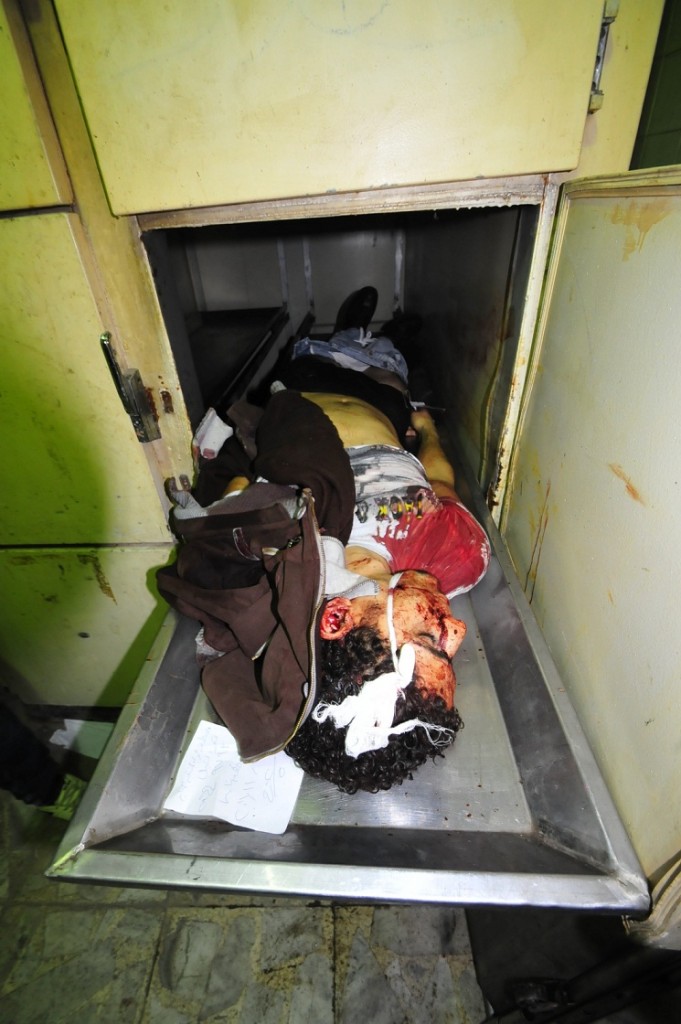
Cause of death included live ammunition, with several bodies coming in with multiple gunshot wounds, buckshot wounds and affixation from the tear gas. Field hospital doctors reported some bodies were completely black because of the tear gas. At least two children, both 15 year-olds, were killed.
The health ministry and Zeinhom morgue refused to issue proper death certificates for many of the victim’s families, instead documenting the cause of death as being a “heart attack,” which prompted many to demand full autopsies of their loved ones’ bodies. The manipulation of death causes is the chief reason why there is no clear death toll.
Hassan Ibrahim
Lost opportunity?
The refusal of protesters to give up led to Tantawi accepting Sharaf’s resignation. The military was also forced to release a statement saying it would guarantee presidential elections happened before June 2012, bringing the transition forward by a year.
Protesters were not satisfied with this, demanding SCAF relinquish power immediately.
Word spread of the revolutionaries’ new demand: a civilian transitional government headed by Nobel laureate Mohamed ElBaradei with fellow presidential candidates at the time Hamdeen Sabahy and Abdel Moniem Aboul Fotouh as deputy prime ministers.
“At the time, all the politicians were only interested in parliament and getting elected,” said Mansour. She added that she believes the politicians were fully aware of the violence that was taking place.
It was decided that the unfolding political process of parliamentary elections was insufficient to address the demands of the revolutions, she said.
“We started talking about that we wanted a government from the revolution. We wanted a government of Aboul Fotouh, Sabahy, and ElBaradei. We didn’t want the parliament; we wanted a government [headed] by ElBaradei. All three accepted. They all went to Tahrir and approved it.”
But the deal fell apart. Mansour said that when the violence stopped, the momentum for critiquing the elections stopped as well. There have been many rumours on what proposed this governing coalition to collapse, but nothing concrete.
Revolutionary youth have since considered Mohamed Mahmoud Street a defining moment when SCAF could have been brought down but the revolution’s political leadership missed the opportunity.
Al-Dostour Party founding member, Jermeen Nasr, believes Islamists brought down the proposed government, however.
“On 22 November 2011 all stages bearing political parties’ logos were removed except a single platform for the revolution’s demands. The revolutionary faction called for the formation of a national salvation government, or transitional government to be led by Mohamed ElBaradei, Abdel Moniem Aboul Fotouh and [constitutional scholar] Hossam Eissa but that wasn’t accepted by the Islamic factions such as the Muslim Brotherhood and supporters of [Salafi leader] Hazem Salah Abu Ismail,” she said.
“ElBaradei then said that he wouldn’t impose himself to form this government and it should be led by someone who would be accepted by all factions,” added Nasr.
Elections were held as scheduled and the young revolutionaries watched in despair as the Brotherhood and the Salafis swept up the vast majority of parliamentary seats.
The dust settles
Mohamed Mahmoud Street set the trend for mass arrests following clashes. In the roundups protesters were detained and beaten while under police custody.
“During the trial our investigations proved that torture took place,” said Mahmoud Belal, a lawyer for protesters in subsequent court cases.
After a month, the last of the protesters had been released from custody. However, 379 faced criminal charges ranging from resisting authorities, blocking traffic, and destroying public property.
On 8 October, President Mohamed Morsy issued a presidential decree granting amnesty to many individuals convicted of offences that were defined as “supporting the revolution.” This included most of those detained during Mohamed Mahmoud, and in the end 327 had their charges dropped.
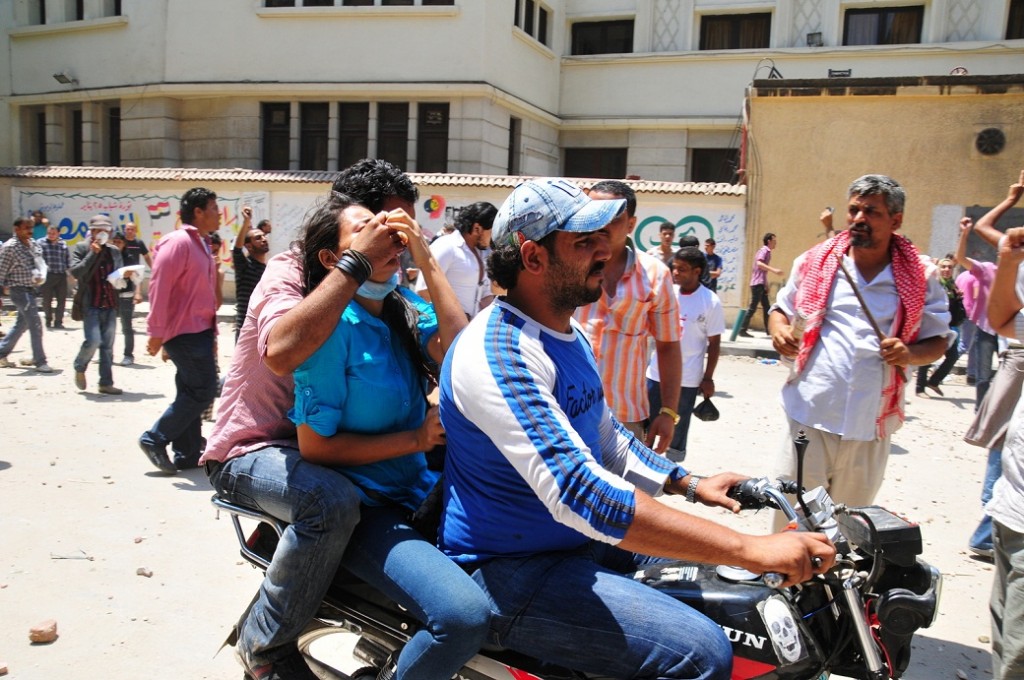
The image of men on their motorcycles before the clashes generalised them as thugs and many were intimidated by them. They went a long way to changing this stereotype through putting themselves in direct danger to save the lives of others during the clashes. Many of the people involved have described them as heroes.
Hassan Ibrahim
The rest still face trial with the verdict scheduled for 15 December.
Despite the hundreds of protesters that were made to stand trial, only a single police officer was accused of violence.
A lieutenant, Mahmoud Sobhy Al-Shennawy, remains in custody as he faces charges stemming from his involvement as a sniper for the police force. Lawyers say that Al-Shennawy intentionally targeted protesters’ eyes and shot with an intention to kill.
Belal said that Al-Shennawy, the sole representative of the police force, is not even being charged with murder. He only faces charges of attempted murder, a fact that Belal said, “will not deliver justice.”
SCAF did not come out of the clashes unscathed, however. It was forced to abandon its plans to draft the constitution before presidential elections. Similar clashes down the line like the Cabinet building clashes in December or the Abbaseya clashes in May would force it into more political concessions.
The military’s loss was not the gain of the revolutionaries, but the Brotherhood.
“The ultimate beneficiary was the Muslim Brotherhood primarily, the Salafis secondarily, and the young revolutionaries came out nearly empty handed,” said prominent sociologist and political analyst Saad El Din Ibrahim.
Their Muslim Brotherhood went on to win over 45 per cent of seats in the lower house of parliament and 58 of the upper house. The party chairman went on to become Egypt’s president because of elections that were held a year earlier, due to the sacrifices of protesters his group said were trying to sow chaos in Egypt.
“Mohamed Mahmoud was used by the Muslim Brotherhood to mobilise, highlight, and dramatise discontent against SCAF and against the remainder of the establishment that was in place,” said Ibrahim.
The Brotherhood now has dominance over the constitutional drafting process as well. Islamists make up a 60 per cent majority of the Constituent Assembly tasked with drafting the new constitution and the Brotherhood leads that bloc.
“They marshalled and manipulated every event that happened. The Muslim Brotherhood ended up collecting all the fruits.”
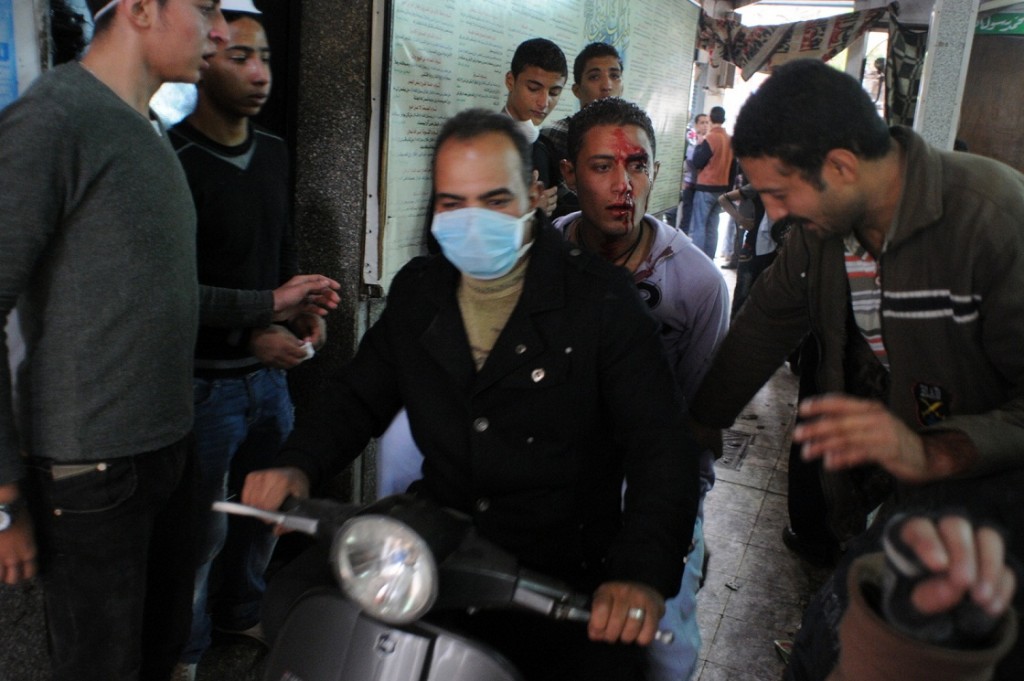
Laurence Underhill
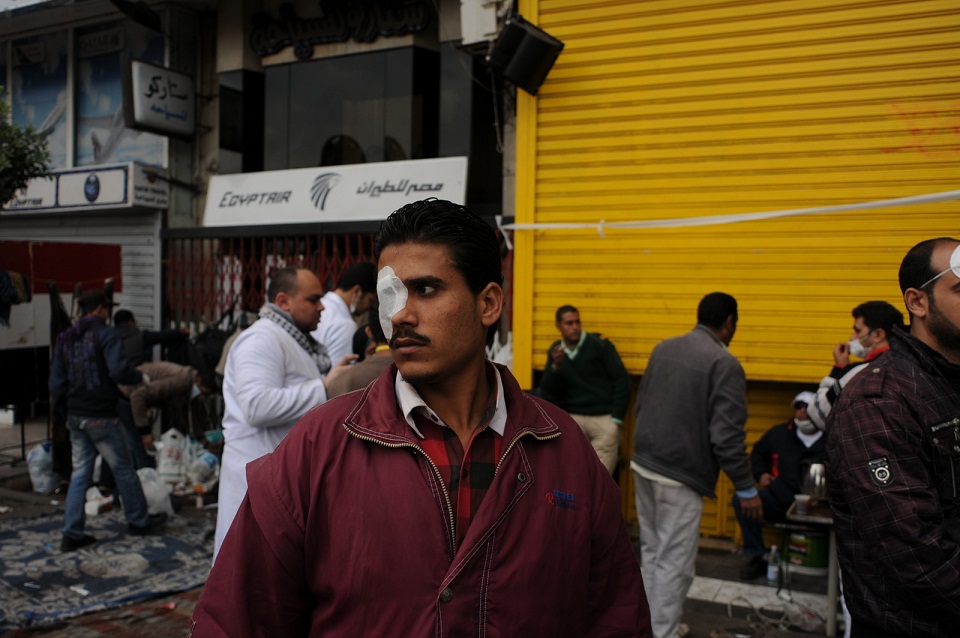
Dozens of protesters lost their eyes, including activist Malek Mostafa. Dostour Party founding member, Ahmed Harrara, lost his second eye in the Mohamed Mahmoud clashes after losing the first on 28 January.
Police lieutenant Mahmoud Sobhy Al-Shennawy, dubbed “they eye sniper” was filmed doing exactly that while surrounding by his subordinates, who shouted “well done sir” every time he hit a protester in the eye.
Al-Shennawy is in custody facing charges of attempted murder. No other police officer has faced any legal action.
Laurence Underhill
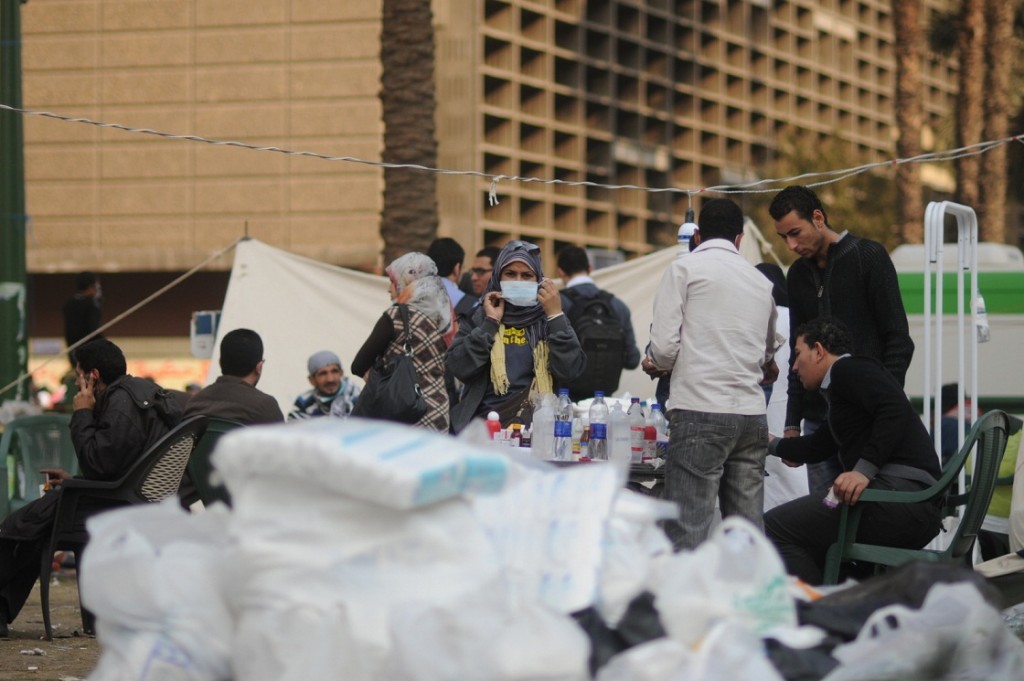
Thousands of protesters brought supplies for the field hospitals such as medicine and medical equipment. A Twitter account, Tahrir Supplies, was set up to inform protesters what the field hospitals were running low on and what they did not need any more of.
In future clashes field hospitals became a target of violence. Alaa Abdel Hady, a doctor, was one of the victims in the December clashes that followed. He was shot dead as he treated the wounded in a field hospital.
Laurence Underhill
